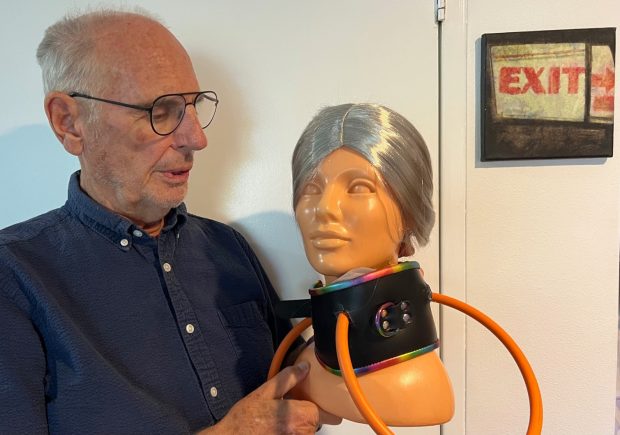November 20, 2025
Coöperatie Laatste Wil introduces new end-of-life method
Coöperatie Laatste Wil introduces new end-of-life method reports Susan Wichgers in Trouw.
Coöperatie Laatste Wil came under heavy fire for recommending “Middel X”. With a new suicide collar, it is once again testing the limits of the law.
Following a major court case concerning Middel X, the Last Will Cooperative (CLW) has now introduced a new method for “self-chosen end-of-life”: the suicide collar [of Exit International].
The idea is that members will be able to make these themselves in a workshop in the future, using instructions provided by the cooperative.
On Saturday, the plan for the so-called “Kairos collar” – currently still in the testing phase – and the workshop will be presented during a members’ meeting.
Frans Copini, interim director of the CLW, expects it to be approved, after which the idea will be realised in the coming year.
Persecuted CLW members
The CLW, which has around 30,000 members, is committed to self-determination at the end of life and has been looking for ways to end life at a self-chosen moment for some time.
Previously, it came up with the controversial “Middel X”, a substance from the chemical industry that, according to the cooperative, could also be used as a suicide powder.
The substance is legal to possess, but distributing it is considered assisted suicide, which is a criminal offence. In 2023, substance X seller Alex S. was convicted for this.
Last year, a member and former director of the CLW were also found guilty of participating in a criminal organisation.
Copini believes that the cooperative does not run that risk with the collar. He does not expect members or directors to be prosecuted, as happened with Middel X.
‘Distributing information about suicide drugs is not considered a criminal act of assisting suicide,’ says Copini. ‘And in the workshop, that is exactly what we will do: provide information.’
Instructions are considered to be assistance in suicide. But according to the director, that will not be the case.
‘If I were to help put on the collar and tell someone where to squeeze or press, that would be an instruction. But we don’t do that.’
A “humane” death
To ensure that the collar is not used irresponsibly, only members will likely be granted access to the workshop, says Copini.
The CLW does not impose any requirements for membership, so the question is what guarantees this.
‘But if it turns out that everyone and anyone is coming, we could also say that someone must have been a member for one, two or three years.’
Apart from the lawsuits, Agent X also came under fire because it did not lead to a “humane” death, as the CLW had claimed at the time.
Various media outlets published stories from experts and relatives who painted a far from peaceful picture of death by Middel X.
Sarco design
It is not yet clear whether the collar leads to a more pleasant death.
According to the cooperative, two inflatable balloons that press on the carotid arteries and “baroreceptors” in the neck cause the user to lose consciousness before death.
The collar was created by Philip Nitschke, the doctor who also developed Sarco, the suicide capsule that fills with nitrogen. The design will also be available in the CLW workshop.
Nitschke, founder of the “right to die” organisation Exit International, calls the collar a “peaceful and reliable” method.
According to the doctor, a similar idea was already conceived and researched by the American army during the Second World War.
No one has yet died from the Kairos collar that Nitschke developed himself on that basis, he says.
The CLW will first test the collar further in collaboration with Exit International, says Copini. Only when the board is certain that it works properly will the design be made available.
